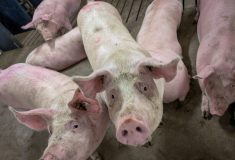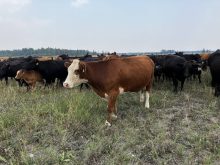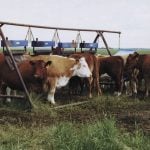Western Canadian feeder cattle prices appear to have stabilized for the time being. Auction market volumes have declined, with the small-farmer cattle feeder preparing for spring seeding. The market will likely consolidate over the next month as warmer temperatures materialize. Demand for grass cattle improved last week but with barley prices jumping another $5 per tonne, feedlot demand was sluggish.
A large group of black white-faced Angus age-verified heifers weighing 620 pounds sold for $145 per hundredweight in Manitoba. A group of 680-lb. Charolais cross age-verified steers sold for $160/cwt in southern Alberta. Medium-flesh red Charolais steers weighing 840 lbs. sold for $140/cwt in the Picture Butte area. Alberta packers bought slaughter steers at $110/cwt, the same price as last week.
Read Also

Europe, North America face early wave of bird flu cases
An unusually early outbreak of bird flu cases affecting high numbers of wild birds and poultry farms across Europe and North America is raising concerns of a repeat of previous crises that led to mass culling and food price spikes.
The U.S. Department of Agriculture’s cattle on feed report showed March placements were down 6.4 per cent from last year. This is the first month in the past year where placements have significantly dropped under year-ago levels and I expect this trend will continue given the tighter supplies.
Feedlots continue to hold back on sales and market-ready supplies of slaughter cattle are building. Alberta margins are clearly in red ink due to the high cost of feeders over the winter and rising barley prices. April wet weather resulted in adverse feedlot pen conditions and feeding efficiencies are lower than expected. All these factors are working against the feeder market. The price pattern is very similar to last year and this indicates the market will remain soft into the summer.















